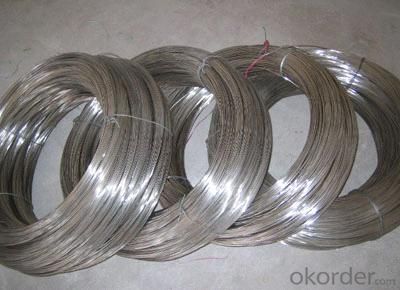Packaging & Delivery
| Packaging Details: | bundle or as customer's requirement. |
|---|---|
| Delivery Detail: | 7 days after receving the 30% advanced payment |
OKorder Service Pledge
OKorder Financial Service
You Might Also Like
Model Number:8# 10# 12# 14# 16# 18# 20#
Surface Treatment:Galvanized
Galvanized Technique:Electro Galvanized
Type:Iron wire
Function:Binding Wire
Wire Gauge:0.9-4.0mm
Galvanized:Bright
| Packaging Details: | bundle or as customer's requirement. |
|---|---|
| Delivery Detail: | 7 days after receving the 30% advanced payment |
It is a top quality product of both Hebei Province and the Ministry of Metallurgical Industry of China.This product is used for coal mining or binding.
| Hot(Electro) Iron Wire | ||||||
| Dia. (mm) | Tolerance (mm) | Surface | Zinc of coating (g/m2) | Tensile Strength(Mpa) | Torsions (times) | Elongation (%) |
| A | ||||||
| 0.9 | ±0.02 | Galvanized | 70-100(Electro) 180-300(Hot) | 350-550 | 15-33 | 10-20 |
| 1.25 | ±0.02 | |||||
| 1.6 | ±0.02 | |||||
| 2.0 | ±0.02 | |||||
| 2.5 | ±0.02 | |||||
| 3.15 | ±0.03 | |||||
| 4.0 | ±0.03 | |||||

Send your message to us
OKorder Service Pledge
OKorder Financial Service
Similar products
Hot products
Hot Searches